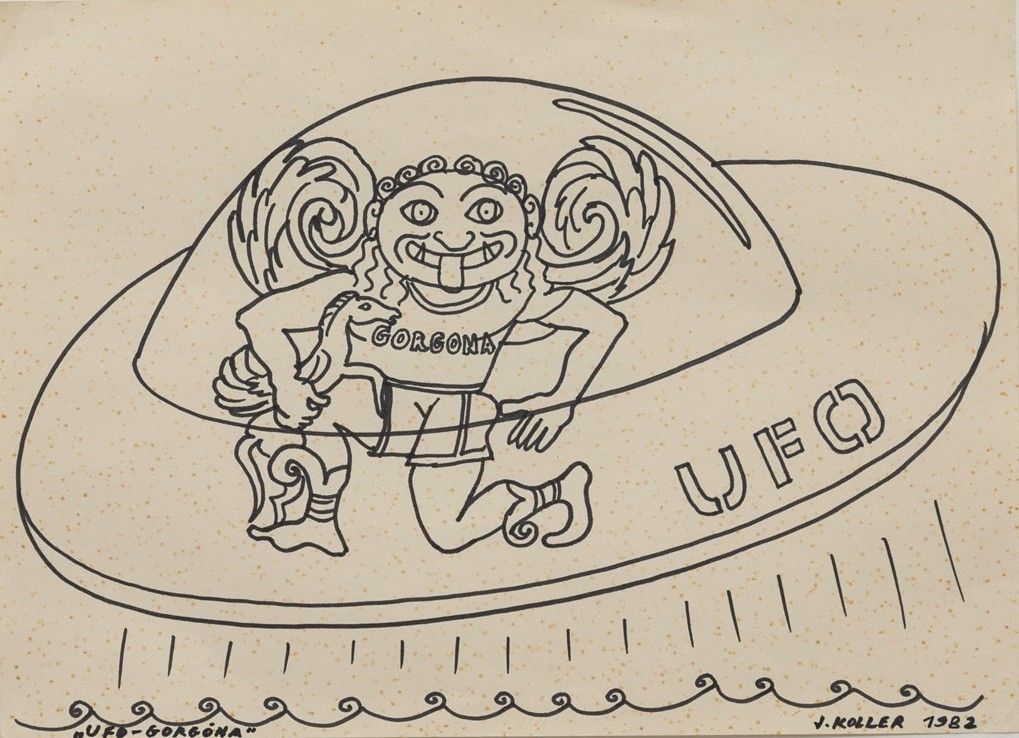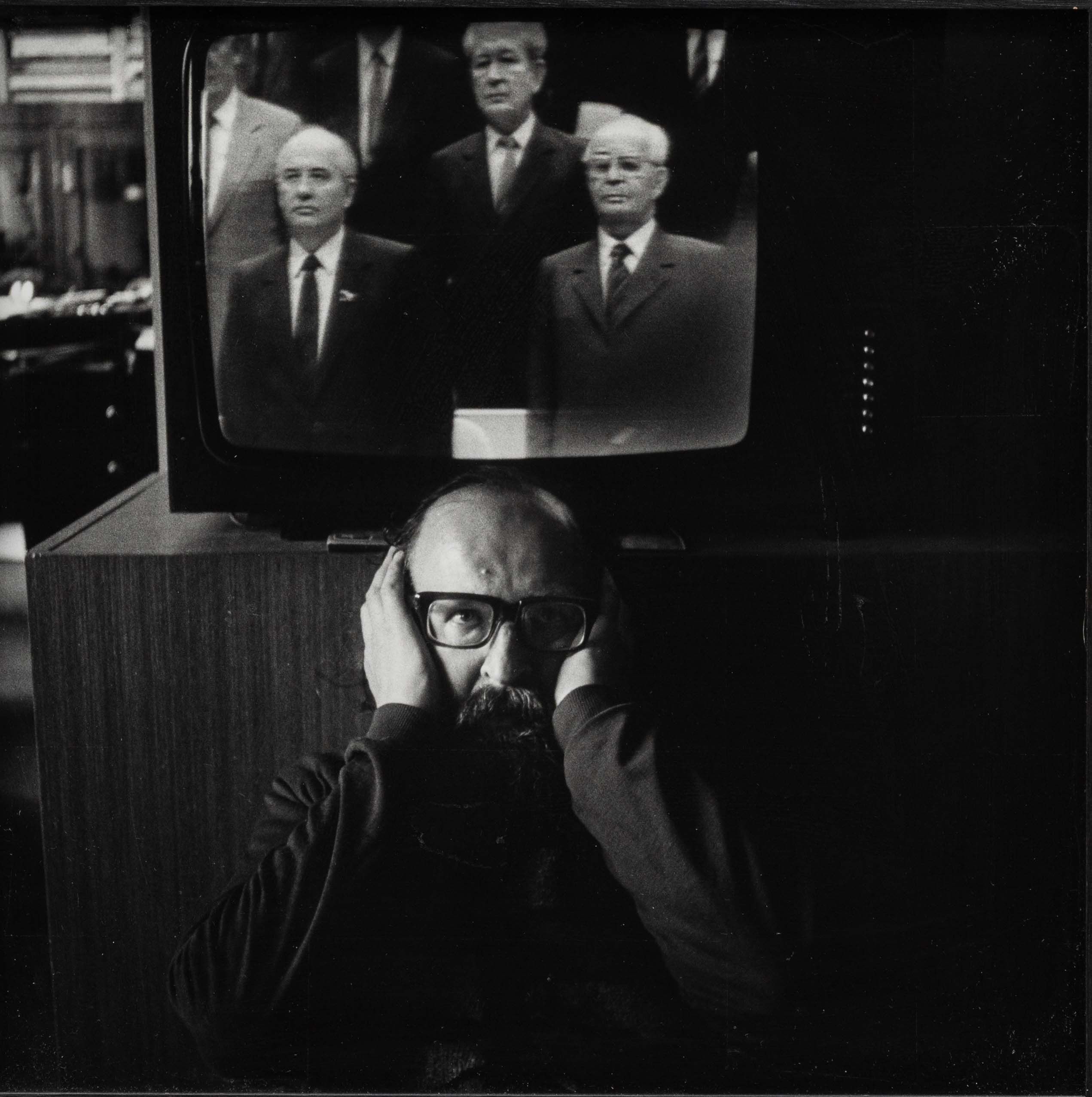Július Koller
The Sinusoid of (Mis)Understanding
| Venue: | acb Plus |
| Date: | Jul 04 – Aug 15, 2025 |
| Opening: | Jul 03, 2025, 18:00–21:00 |
Description
curated by Daniel Grúň
In 1970, Július Koller introduced the concept of U.F.O.—short for Universal-Cultural Futurological Operations—into his artistic practice, accompanied by a manifesto. This statement laid the groundwork for much of his later work. Koller used the idea of unidentified flying objects—often associated with pseudoscience and extraterrestrial life—as a metaphorical tool for expressing his personal commitment to shaping cultural situations. Rather than treating U.F.O.s literally, he used them as conceptual cipher to express his active, personal role in analysing and influencing culture.
These long-term “operations” and “cultural situations” were speculative in nature, directed toward the future while offering pointed commentary on the present. During the era of so-called “Normalization” in Czechoslovakia (1972–1989), Koller’s performative use of U.F.O. stood in stark contrast to the prevailing atmosphere of social and political passivity.
With U.F.O., Koller created a layered system of meaning that linked representation with the possibility of its transformation. Each letter in the acronym became a site for multiple interpretations, allowing for playful, open-ended associations. From 1970 onward, he began to explore its acronymic potential: U could stand for Universal, Utopian, or Undisclosed; F included terms like Fantastic, Factorgraphic, Folkloristic, Figural, Familiar, and Functional; O encompassed ideas such as Object, Ornament, Orientation, Observation, and—importantly—Slovak words like Obraz (Picture) and Otáznik (Question Mark).
Through these shifting meanings, Koller encouraged viewers to imagine alternative realities. U.F.O. was not just a concept, but a flexible structure that invited reinterpretation and speculation, making it one of the most inventive and subversive elements of his practice.
This first-ever comprehensive exhibition of Július Koller in Hungary takes inspiration from a recurring motif in his work: the wavy line or sinusoid. This dynamic form breaks through the rigid ideals of socialist uniformity, challenging the imposed belief that society must conform to a single, standardized model of normality. For Koller, the wave symbolizes many things at once—radio signals, messages from ancient civilizations, and the rhythms of human experience, with its inevitable ups and downs.
The exhibition brings together works spanning nearly five decades, from 1957 to 2006, arranged in an associative manner that reflects Koller’s ongoing use of visual and conceptual tools. These include the question mark, zig-zag, networks, Möbius strip, ping-pong, UFOs, the Bermuda Triangle, Atlantis, and other recurring symbols.
A wide range of visual media is on display, including drawings, paintings, photographs, objects, and prints. Through these works, Koller sought to distance art from the elitism, dogma, and emptiness he observed in the official culture of his time. Instead, he emphasized communication, imagination, and direct engagement.
A special focus is given to Mail Art, one of Koller’s most important means of international connection during the early 1970s. This medium allowed him to correspond with artists across Europe, including key figures from Hungary such as György Galántai, Géza Perneczky, Endre Tót, Sándor Pinczehelyi, Bálint Szombathy, and László Beke. Koller maintained regular contact with many of them, both through letters and personal meetings.
By presenting Koller’s work alongside that of his Hungarian contemporaries, the exhibition highlights shared themes and parallel approaches, revealing a broader network of conceptual experimentation in Central and Eastern Europe.
Exhibtion is realised in collaboration with The Július Koller Society / Bratislava.

